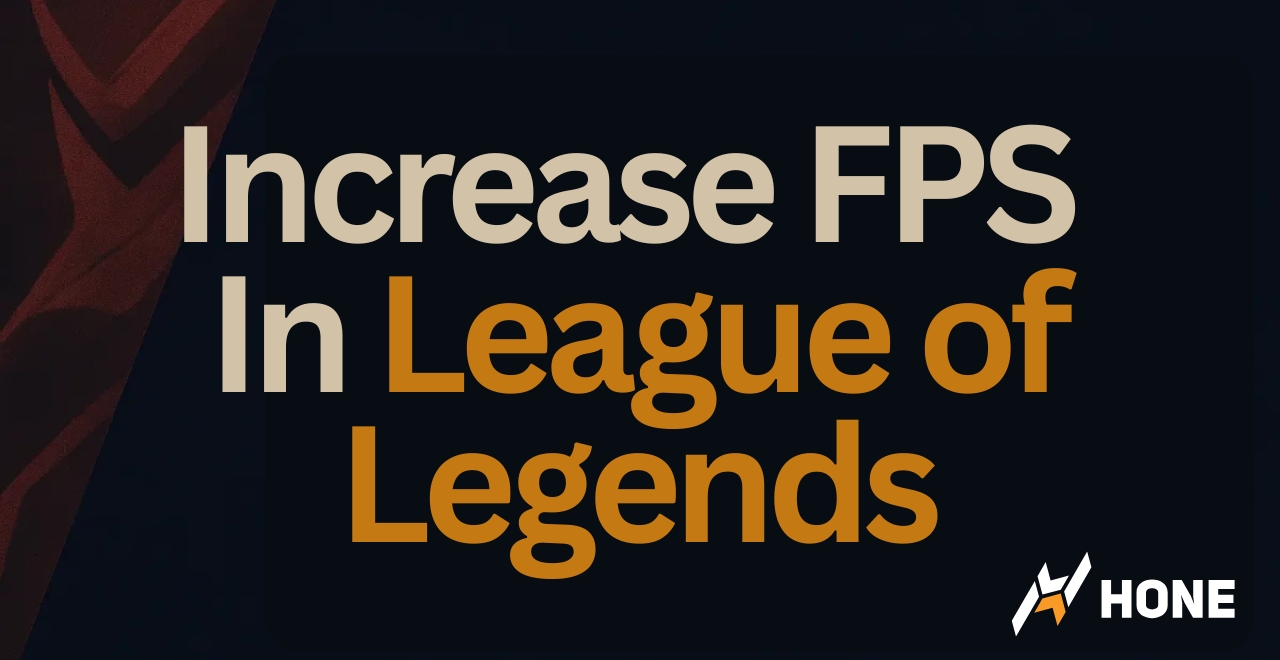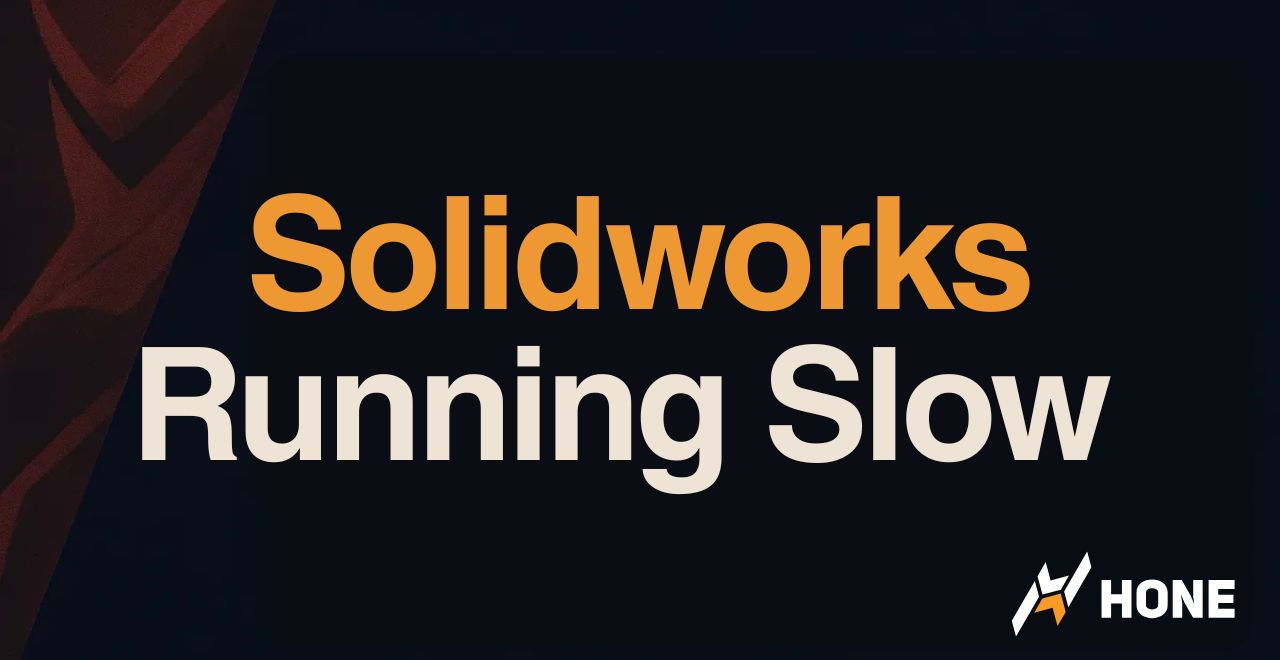Every frame counts when you’re chasing that perfect outplay. Whether you’re stuck at 30 FPS during teamfights or just want that buttery-smooth 144Hz experience, squeezing more frames from League isn’t rocket science
This guide cuts through the BS and delivers proven FPS optimization techniques that actually work. From must-change settings that can double your frames to advanced tweaks for competitive players, we’ve tested everything so you don’t have to.
5-Minute Quick Wins for Instant FPS Boost
Let’s start with the changes that’ll give you immediate results. These five tweaks take minutes to implement but can literally double your FPS on some systems. No technical knowledge required; just follow these steps and watch your frames soar.
- Set Shadows to “Off” → Video Settings → Shadows → Off (instant 10-15% boost)
- Drop Effects Quality to “Low” → Video Settings → Effects Quality → Low (20-30% gain in fights)
- Switch to Fullscreen Mode → Video Settings → Window Mode → Fullscreen (5-10% improvement)
- Enable Low Spec Mode → Client Settings (gear icon) → Enable Low Spec Mode
- Set Windows to High Performance → Windows Settings → Power & Sleep → Additional Power Settings → High Performance
Expected result: 30-50% FPS improvement in under 5 minutes. Test your FPS with Ctrl+F in-game before and after!
In-Game LoL Settings
Your in-game settings have the biggest impact on FPS. Unlike other tweaks that might squeeze out a few extra frames, these settings can literally transform an unplayable slideshow into silky-smooth gameplay. Here’s exactly what each setting does and why it matters for your frames.
Core Graphics Settings That Actually Matter
Not all settings are created equal. Some tank your FPS for minimal visual improvement, while others barely touch performance. Here’s the breakdown:
| Setting | FPS-Focused Value | FPS Impact | Real-World Difference |
|---|---|---|---|
| Shadows | Off | MASSIVE +10-15% | Biggest single FPS gain. Shadows are purely cosmetic in LoL; turning them off won’t affect gameplay. |
| Effects Quality | Low | MASSIVE +20-30% | Critical for teamfight performance. Low settings still show all important ability indicators. |
| Character Quality | Low-Medium | MEDIUM +5% | Champions still look decent on Low. Medium is a good compromise if you have headroom. |
| Environment Quality | Low | HIGH +7-10% | Makes the map less detailed but doesn’t affect visibility of important elements. |
| Anti-Aliasing | Off | MEDIUM +3-5% | League’s art style masks jagged edges well. You won’t miss AA once it’s off. |
| V-Sync | Off | HIGH (Input Lag) | Adds input delay. Combine FreeSync/G-Sync + V-Sync + Low Latency Mode in the Nvidia Control Panel instead if you have screen tearing. |
| Frame Rate Cap | Match Monitor Refresh Rate | LOW | Match to monitor refresh rate, or combine G-Sync + V-Sync + Low Latency Mode. |
| Character Inking | Off | LOW +5% | Removes black outlines around champions. Small gain but cleaner look. |
| Window Mode | Fullscreen | HIGH +5-10% | Exclusive fullscreen bypasses Windows desktop compositor for lower latency. |
Pro Tip: Resolution Scaling
If you’re still struggling after optimizing all settings, consider dropping your resolution one tier (1080p → 900p, or 1440p → 1080p). This can provide a 30-40% FPS boost but comes at the cost of image clarity. Only use as a last resort; most systems can hit 60+ FPS at native resolution with proper settings.
Quick math: 1920×1080 = 2.07 million pixels. 1600×900 = 1.44 million pixels. That’s 30% fewer pixels to render every frame!
Client Settings That Free Up Resources
The League client is notorious for hogging resources even during games. Here’s how to tame it:
| Setting | Location | Recommended | Why It Helps |
|---|---|---|---|
| Low Spec Mode | Client Settings → General | Enabled | Disables client animations and reduces RAM usage by ~200-300MB |
| Close Client During Game | Client Settings → General | Enabled | Completely closes the client, freeing up 500MB+ RAM and CPU cycles |
| Enable DX11 Legacy Mode | Game Settings → Prefer DX9 | Test Both | Some older systems perform better with DX9, while newer ones prefer DX11 |
| Hide Eye Candy | Video → Advanced | Enabled | Removes ambient creatures and decorative animations from the map |
| HUD Animations | Interface → HUD | Disabled | Removes UI animations, making health/mana changes instant (~5% gain) |
// Navigate to: C:\Riot Games\League of Legends\Config\
// Back up your game.cfg first, then add these lines:
[Performance]
ShadowsEnabled=0
CharacterInking=0
EnableHUDAnimations=0
EnableGrassSwaying=0
PerPixelPointLighting=0
EnableFXAA=0
DisableAero=1
[General]
WindowMode=0
Colors=32
Width=1920
Height=1080
CursorOverride=0
UseHardwareCursor=1
[FloatingText]
Damage_Enabled=1
Gold_Enabled=0
EnemyDamage_Enabled=1
Experience_Enabled=0
QuestReceived_Enabled=0
Windows Optimization for League of Legends
Windows loves to throttle your hardware and run unnecessary junk in the background. These tweaks ensure your system dedicates maximum resources to League instead of wasting them on Cortana’s dreams or Windows Update’s download fetish.
Essential Windows Settings for Gaming
| Setting | How to Access | Optimal Value | Impact |
|---|---|---|---|
| Power Plan | Control Panel → Power Options | High Performance / Ultimate Performance | HIGH – Prevents CPU throttling |
| Game Mode | Settings → Gaming → Game Mode | On | MEDIUM – Prioritizes game resources |
| Hardware-Accelerated GPU Scheduling | Settings → Display → Graphics Settings | Test (Off if ≤8GB VRAM) | VARIABLE – Can help or hurt |
| Xbox Game Bar | Settings → Gaming → Xbox Game Bar | Off | LOW – Removes overlay overhead |
| Background Apps | Settings → Privacy → Background Apps | All Off | MEDIUM – Frees CPU/RAM |
| Windows Updates | Settings → Update & Security | Pause During Gaming Sessions | HIGH – Prevents mid-game downloads |
Hardware-Accelerated GPU Scheduling (HAGS) increases VRAM usage by about 1GB. If your graphics card has 8GB or less VRAM, enabling HAGS can cause severe stuttering when you exceed VRAM capacity. Test it yourself, but be ready to disable it if you experience:
- Sudden FPS drops during teamfights
- Texture pop-in or delayed loading
- Stuttering that wasn’t there before
To check your VRAM usage: Press Ctrl+Shift+Esc → Performance tab → GPU → Look for “Dedicated GPU memory”
Killing Background Resource Hogs
These common culprits love stealing your precious frames. Here’s your hitlist:
@echo off
echo Stopping unnecessary services for gaming...
:: Stop Windows Search
net stop "Windows Search"
:: Stop Windows Update
net stop wuauserv
:: Stop Superfetch/SysMain
net stop SysMain
:: Kill common resource hogs
taskkill /F /IM "MicrosoftEdge.exe"
taskkill /F /IM "SkypeApp.exe"
taskkill /F /IM "OneDrive.exe"
taskkill /F /IM "Teams.exe"
echo Services stopped! Remember to restart them after gaming.
pause
Smart Background Management
Instead of manually closing programs every time, use these strategies:
- MSI Afterburner: Not just for overclocking; use it to monitor which processes spike during games
- Process Lasso: Free tool that automatically manages process priorities and can pause specific apps during gaming. Video on how to set it up can be found here.
- Windows Focus Assist: Settings → System → Focus Assist → Set to “Priority only” during games
The goal isn’t to close everything; it’s to identify what’s actually impacting your performance. Discord using 2% CPU? Leave it. Chrome with 47 tabs eating 4GB RAM? That’s gotta go.
Advanced LoL FPS Optimization
Your GPU control panel is where the magic happens. These driver-level tweaks can squeeze out those last precious frames and reduce input lag to near-zero. The settings differ between NVIDIA and AMD, but the principles are the same: maximum performance, minimum fluff.
NVIDIA Control Panel Optimization
Right-click your desktop → NVIDIA Control Panel → Manage 3D Settings. Here’s what to change:
| Setting | Optimal Value | Why | FPS Impact |
|---|---|---|---|
| Power Management Mode | Prefer Maximum Performance | Keeps GPU at max clocks, prevents throttling, uses more power | HIGH |
| Low Latency Mode | On (Ultra for competitive) | Can reduce input lag significantly | MEDIUM |
| Texture Filtering – Quality | High Performance | Optimizes texture processing for speed | LOW +1-2% |
| Threaded Optimization | On | Uses multiple CPU cores for driver tasks | MEDIUM |
| Vertical Sync | Off (Use G-Sync + V-Sync + LLM if available) | V-Sync, if used by itself, increases input lag | HIGH |
| Max Frame Rate | Off or 3 below monitor Hz | Uncapped for max FPS, or cap for G-Sync | LOW |
| Antialiasing – FXAA | Off | Let game handle AA or disable entirely | LOW |
| Ambient Occlusion | Off | Unnecessary shadow detail for LoL | MEDIUM |
G-Sync Sweet Spot Configuration
If you have a G-Sync/G-Sync Compatible/FreeSync monitor, here’s the optimal setup for zero tearing AND minimal input lag:
- Enable G-Sync in NVIDIA Control Panel
- Set V-Sync to “On” in NVIDIA Control Panel (acts as frame time compensator)
- Set in-game V-Sync to “Off”
- Set low latency mode to “On” in NVIDIA Control Panel
This prevents V-Sync from inducing extra input latency, while ensuring there’s no screen tearing.
AMD Radeon Settings Optimization
Right-click desktop → AMD Radeon Software → Gaming → Global Graphics. Configure these:
| Setting | Optimal Value | Notes | FPS Impact |
|---|---|---|---|
| Radeon Anti-Lag | Test (Usually On) | Reduces input lag but can cause issues in some games | MEDIUM |
| Radeon Chill | Off (or min=max FPS) | Dynamic FPS can feel inconsistent in LoL | LOW |
| Radeon Image Sharpening | Off or 20-40% | Personal preference, minimal performance impact | LOW |
| Enhanced Sync | Off | Known to cause issues, use FreeSync instead | MEDIUM |
| Wait for Vertical Refresh | Always Off | AMD’s V-Sync, adds input lag, unless combined with FreeSync/G-Sync and Anti-Lag/LLM | HIGH |
| Texture Filtering Quality | Performance | Prioritizes speed over quality | LOW |
| Anti-Aliasing Method | Use Application Settings | Let LoL handle AA | LOW |
| FreeSync | On (if monitor supports) | Eliminates tearing without V-Sync lag | No impact |
While Radeon Anti-Lag can reduce input latency, it’s been known to cause issues in certain games including occasional reports in League. If you experience any of these after enabling it:
- FPS drops or inconsistent frame pacing
- Input feeling “floaty” or delayed
- Random stutters that weren’t there before
Turn it off immediately. The feature works great in many games but League’s engine can be finicky with driver-level frame pacing modifications.
Finding Your System’s Bottleneck
Throwing random settings at the wall won’t help if you don’t know what’s actually limiting your FPS. Is your ancient CPU crying for mercy? Is your GPU taking a nap? Let’s find out exactly what’s holding you back.
How to Identify Your Bottleneck
The 2-Minute Bottleneck Test
- Download MSI Afterburner (free) and install with RivaTuner Statistics Server
- Enable OSD monitoring for: GPU Usage %, CPU Usage %, RAM Usage, GPU Memory Usage
- Play a full game (ARAM works for quick testing)
- Watch the numbers during teamfights:
- GPU at 95-100% = GPU bottleneck → Lower graphics settings
- Any CPU core at 95-100% = CPU bottleneck → Close background apps, lower Effects
- Neither maxed but low FPS = RAM speed issue or driver problems
| Bottleneck Type | Symptoms | Quick Fixes | Long-term Solution |
|---|---|---|---|
| CPU Bottleneck | • FPS doesn’t improve when lowering graphics • High CPU usage (95%+) • Stutters when lots happening |
• Close all background apps • Disable Windows features • Lower Effects Quality |
• Upgrade CPU • Enable XMP/DOCP for RAM • Overclock if possible |
| GPU Bottleneck | • GPU usage at 99-100% • FPS improves with lower settings • Higher resolutions tank FPS |
• Lower all graphics settings • Reduce resolution • Update GPU drivers |
• Upgrade GPU • Overclock GPU • Improve case cooling |
| RAM Bottleneck | • Stuttering despite low CPU/GPU • FPS drops when tabbing • Slow texture loading |
• Close Chrome (seriously) • Enable Low Spec Mode • Restart PC before gaming |
• Add more RAM (16GB ideal) • Enable XMP for speed • Upgrade to faster RAM |
| VRAM Bottleneck | • Stuttering in late game • Texture pop-in • GPU memory at 95%+ |
• Lower texture quality • Disable HAGS • Close hardware acceleration apps |
• GPU with more VRAM • Lower resolution • Avoid 4K with <8GB VRAM |
MSI Afterburner OSD Settings for League:
1. GPU Usage (%) - Shows if GPU is working hard
2. GPU Temperature - Watch for thermal throttling (>83°C)
3. Memory Usage (MB) - Track VRAM consumption
4. Core Clock (MHz) - Ensure GPU isn't downclocking
5. CPU Usage (%) - Overall CPU load
6. CPU1 Usage (%) - Individual core usage (League uses 2-3 cores mainly)
7. RAM Usage (GB) - System memory consumption
8. Framerate - Your actual FPS
9. Frametime - Consistency indicator (lower = smoother)
Position: Top-left corner, size 0.7, green color (#00FF00)
Common League of Legends FPS Issues & Quick Fixes

Sometimes League decides to run like garbage for no apparent reason. Before you blame your hardware, try these solutions to weird FPS problems that plague even high-end systems.
Quick Fixes for Sudden FPS Drops
- Delete Config folder: C:\Riot Games\League of Legends\Config (game recreates with defaults)
- Repair game files: Client Settings → Initiate Full Repair
- Reset GPU driver settings: Set League profile to default, reapply optimizations
- Disable Discord overlay: User Settings → Game Overlay → Toggle off
- Check for Windows update: Recent Windows updates love breaking game performance
| Problem | Common Causes | Quick Fix |
|---|---|---|
| 144Hz monitor stuck at 60 FPS | • Wrong cable (HDMI 1.4) • Windows display settings |
• Use DisplayPort cable • Set monitor to 144Hz in Windows |
| FPS drops in teamfights only | • Effects Quality too high • CPU thermal throttling • Background recording |
• Set Effects to Low immediately • Check CPU temps (HWMonitor) • Disable ShadowPlay/ReLive |
| Stuttering despite high FPS | • Frame time spikes • Driver overhead • Network issues appearing as stutters |
• Cap FPS to stable value • DDU and reinstall GPU drivers • Use Ethernet, not WiFi |
| Random 1-second freezes | • Antivirus scanning • HDD as game drive • RAM running in single channel |
• Add LoL to AV exceptions • Move game to SSD • Check RAM slots (should be 2&4) |
If you’ve tried everything and League still runs poorly on hardware that should handle it easily, consider these “nuclear” options:
- DDU (Display Driver Uninstaller): Complete GPU driver wipe and reinstall
- Windows Reset: Settings → Update & Security → Recovery → Reset this PC (keep files)
- Clean Windows Install: Last resort but can fix deep-rooted issues causing 50%+ performance loss
Before going nuclear, make sure it’s not just thermal throttling. Download HWMonitor and check if your CPU/GPU temperatures exceed 85°C under load. A simple repaste or case cleaning might be all you need.
Your Personal FPS Optimization Checklist
Copy this checklist and work through it systematically. Most players see 40-60% FPS improvement after completing all steps. Remember to test your FPS (Ctrl+F in-game) before and after each major change to see what helps most on your specific system.
In-Game Settings (Do First!):
- ☐ Shadows → Off
- ☐ Effects Quality → Low
- ☐ Character Quality → Low/Medium
- ☐ Environment Quality → Low
- ☐ Anti-Aliasing → Off
- ☐ V-Sync → Off
- ☐ Window Mode → Fullscreen
- ☐ Character Inking → Off
- ☐ HUD Animations → Disabled
Client Settings:
- ☐ Enable Low Spec Mode
- ☐ Close Client During Game → On
- ☐ Disable Animations → On
Windows Optimization:
- ☐ Power Plan → High Performance
- ☐ Game Mode → On
- ☐ GPU Scheduling → Test (usually Off)
- ☐ Disable unnecessary startup programs
- ☐ Update GPU drivers
GPU Control Panel:
- ☐ Power Management → Maximum Performance
- ☐ Low Latency Mode → On/Ultra
- ☐ V-Sync → Off (unless using G-Sync/FreeSync + V-Sync + LLM/Anti-Lag)
- ☐ Texture Filtering → Performance
If Still Having Issues:
- ☐ Check temperatures (CPU <80°C, GPU <83°C)
- ☐ Run game as Administrator
- ☐ Disable overlays (Discord, GeForce Experience)
- ☐ Move game to SSD if on HDD
- ☐ Verify 2 RAM sticks in correct slots (2&4)
The Bottom Line
Getting more FPS in League isn’t about having the latest hardware. Players with GTX 1060s regularly hit 200+ FPS because they’ve configured everything correctly, while some with RTX 3080s struggle at 100 FPS due to poor settings.
Start with the big three: Shadows Off, Effects Low, and Fullscreen Mode. Those alone will transform your experience. Then work through the rest based on your specific bottleneck. And remember, the difference between 60 and 144 FPS isn’t just numbers. It’s the difference between seeing that Thresh hook coming and eating it.
Now stop reading and go get those frames. Your LP gains are waiting.
FAQs
How to bring up FPS in League of Legends?
Lower your in-game graphics, cap the frame rate to avoid stutters, and update your drivers. Closing background apps and disabling unnecessary overlays can also help increase FPS.
How do you increase FPS in League of Legends?
Adjust in-game settings to low or medium, enable “Low Spec Mode,” update your GPU drivers, and make sure your PC isn’t overloaded with background apps.
How do I make my FPS higher?
Reduce graphics settings, close extra apps, and keep your drivers up-to-date. If you’re using a laptop, plug it in and set it to “High Performance” mode for extra FPS gains.
How to set max FPS in LoL?
Go to Settings > Video, then find the “Frame Rate Cap” option. Avoid setting it to “Unlimited” as this usually causes stutters.






 Discord
Discord
 Instagram
Instagram
 Youtube
Youtube
 TikTok
TikTok